When thinking of dance in films, the first things to spring to mind for many may be Billy Elliot, Step Up, or Singing in the Rain. I love all of those films, and many others in which dance serves as entertainment or a heartwarming storyline. Movement in all its forms has featured in films since the early days of Hollywood, and film has been a key medium in the development of dance; offering opportunities for new perspectives and angles, as in the work of Busby Berkeley, and raising the profile of certain styles or techniques (as in Happy Feet, which inspired me to take up tap dancing).
Contemporary Dance has made its way onto the big screen in some truly fantastic ways. As an artform that can be abstract or emotive, serious or hilarious, subtle or bold, it lends itself to film in that it can be embedded cleverly into a cinematic world, and in surprisingly beautiful ways. If you’re looking to expand your viewership of dance, or just want some suggestions of great films to watch, I’ve compiled my top 5 favourite moments of dance on screen in the last decade, and encourage you to take a look.
Note: Some potential spoilers ahead…
Saltburn (2023)
In one long shot that travels through the many rooms and corridors of the eponymous mansion, the final dance scene of Emerald Fennell’s Saltburn evokes a deliciously dark sense of victory. Oliver Quick’s (Barry Keoghan) complete comfort within himself and his world is amplified by nudity. His movements are confident and bold, as he struts through the house with shoulders back, chin held high. Blowing kisses in mirrors, sweeping hair back, and flexing muscles; every movement screams narcissism and self-obsession. The choreography is loose, feeling more groove-like than rigorous or technical, but skilfully expresses his total ownership over himself and the space he has infiltrated - through murder and seduction. Set to Y2K nu-disco anthem ‘Murder on the Dancefloor’ by Sophie Ellis-Bextor, the scene’s camp absurdity offers us a much-needed chance to laugh, and even to join in the character’s sick joy (momentarily), as a refreshing and memorable end to the disturbing psycho-sexual thriller.
Choreography: Polly Bennett
Dancer: Barry Keoghan
I’m Thinking of Ending Things (2020)
Charlie Kaufman’s surreal thriller keeps viewers intentionally on edge through non-linear narratives, jarring changes of character names and ages, and an unsettling visual atmosphere. That’s why the inclusion of a dream ballet scene is both surprising and unsurprising - the heightened romanticism, graceful movement and classical score seem at first like they belong to a different world, but this unexpected lightness in itself adds to the “What is going on?” of it all.
The choreography has a sense of floating, swirling, the characters literally step out of themselves and get swept up into a pas-de-deux that is so perfectly balletic it can only be a dream. With New York City Ballet trained dancers, the movement is technical and poised, all soaring lifts and gently placed arms. Connecting hands create never-ending loops which wind and unwind, as the pair spiral along empty high school corridors.
Throughout the film, we aren’t sure who the characters really are, and neither are they. We are plunged into uncomfortable conversations, strange environments, and the abstraction of dance lends itself to this realm. In this non-commercialised way, ballet is used to subtly reveal elements of character and intention. Like the whole movie, the precise meaning of the movement is open to interpretation, but there is a definite emotional flavour that is clear and relatable, and offers a new perspective on the relationship (whether real or imagined) of the main characters.
Choreography: Peter Walker.
Dancers: Unity Phelan and Ryan Steele.
Image by Alessia Bolzoni/Amazon Studios
3. Suspiria (2018)
Luca Guadagnino’s supernatural horror Suspiria does not merely include dance scenes - dance is an essential fabric of the film, woven into the narrative of a German dance academy run by a coven of witches. The witches (‘Matrons’) draw their powers from the students’ movement, and dance is used within the story as a violent, predatory ritual, inflicting bodily harm whilst simultaneously expressing a deeply primal collective power.
Set to a Thom Yorke score and choreographed by Damien Jalet, the film’s group piece Volk was developed from a trio, Les Medusees (2013), which in turn was based on the original 1977 Suspiria by Dario Argento. Jalet’s visceral choreography, grotesquely thrusting and pulsating, distorts and contorts the female cast’s bodies, each bound by trailing red cords. It is unusual for dance to delve into the horror genre, in a way that is not kitschy or ironic, but the result is truly horrifying. The dance in this film is some of the most successful choreography I have ever seen, each movement scene standing out for their brutal, animalistic intensity.
For anyone for whom Horror doesn’t appeal, Damian Jalet’s other work tours across Europe, and some is available online: https://damienjalet.com
Choreography: Damian Jalet.
Dancers: Dakota Johnson, Chloë Grace Moretz, Mia Goth, Elena Fokina, Gala Moody, Sara Sguotti, Olivia Ancona, Anne-Lise Brevers, Halla Thordardottir, Stephanie McMann, Major Van der Schot, Maria Bregignni, Josepha Madoki, Navala ‘Niko’ Chaudhari, Karina El Amrani.
Poor Things (2024)
Yorgos Lanthimos’ Poor Things is beautifully weird in many ways, exploring a woman living with the rapidly developing mind of a child. The highly stylised, steampunk setting of the film uses distorting fish-eye lenses and an off-kilter colour palette to create the quirky world that Bella Baxter (Emma Stone) explores, and this peculiar feeling is captured perfectly with a 2-minute standout dance scene, choreographed by Constanza Macras.
What begins as a solo for Stone, drawn to the dance floor by Jerskin Fendrix’s dissonant Portuguese-folk-inspired music, the scene represents the first time she has experienced music or dance. As such, her movements are jerky, childlike and unsteady at first, erupting out of her almost involuntarily, and as her confidence grows, her movement becomes wild and instinctive. As the dance unfolds she is joined by her self-important and often shameless lover, Duncan Wedderburn (Mark Ruffalo), who attempts in vain to restrain and suppress her vigorous, bouncing expression.
This is an excellent example of storytelling without words; we see Bella’s self-discovery, her enthusiasm for life, her freedom from shame or social inhibition, as contrasted with those around her, all through movement.
Choreography: Constanza Macras.
Dancers: Emma Stone and Mark Ruffalo.
Image by Nico Tavernese/Warner Bros.
Joker (2019)
In my opinion the best dance scene in any film ever, is the Bathroom Dance in Joker. It works so well because it comes completely as a surprise; in one moment Joaquin Phoenix’s Arthur Fleck is running away from the scene of his first murders, in the next his body metamorphoses into a delicate, richly articulated instrument. Hildur Guðnadóttir’s gut-wrenching cello score underpins and elevates the movement, which is slow, subtle, but positively dripping with emotion.
Each careful step, gently unfurling elbow, slight tilt of the chin, tells a story; Phoenix is masterful in his ability to pour meaning into his whole body, and under the sickly, flickering lights of a grimy public bathroom, he becomes totally lost in the dance.
Reminiscent of the work of Gecko Theatre, the emotion starts in the breath and expands organically from shoulder to wrist, and instantly we feel it. We feel all his pain, the agony of being an outsider, abused by so many around him, and from his movement we understand what he is becoming. It is a scene of transformation, and the movement becomes an eerie physical manifestation of the mutations happening within his mind. Every time I see this scene without fail, I feel a pit open in my stomach.
To see contemporary dance being used so well within cinema is an incredible treat, and if you’re looking for a way to understand or connect with watching movement, start here.
Choreography: Improvised by the dancer, Joaquin Phoenix.
“This scene is interesting because it’s right after a life-changing cataclysmic event in Arthur’s life, and he’s found this little kind of rundown park bathroom to go in and collect his thoughts and get himself together. What’s interesting in this scene to me is it’s entirely different to me than what we had scripted. In this script, Arthur was to come into the bathroom, hide his gun, wash off his makeup, and staring at himself in the mirror like, what have I done?. And when we got to the set on the day, Joaquin and I just sort of stood around like, this doesn’t really seem very Arthur. Why would Arthur care to hide his gun? And we really kind of tossed around a million ways to just do something different. And it was about an hour into it, and I said, hey, you know, I got this piece of music from Hildur. Hildur Gudnadottir is our composer, and she’d been sending me music throughout, while we were shooting. And I just wanted to play Joaquin that piece of music. And Joaquin just started to dance to the music, and it was just me and him alone in the bathroom. There’s 250 people on the crew waiting outside. And he just starts doing this dance, and we both kind of look at each other and said, OK, that’s the scene.
It made sense to us because when I first met with Joaquin and we first started talking about Joker, I talked to him that Arthur is one of those people that has music in him. So music and dance became a theme in the film. And this is the second time we see him dancing and it’s a little bit of Joker coming out, a little bit more than the scene before and a little bit less than the next time we see him dance.” — Todd Phillips, the director of JOKER




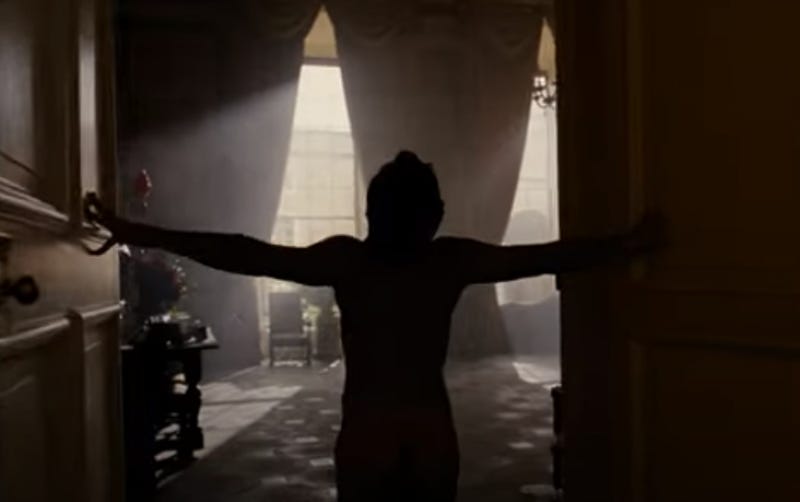
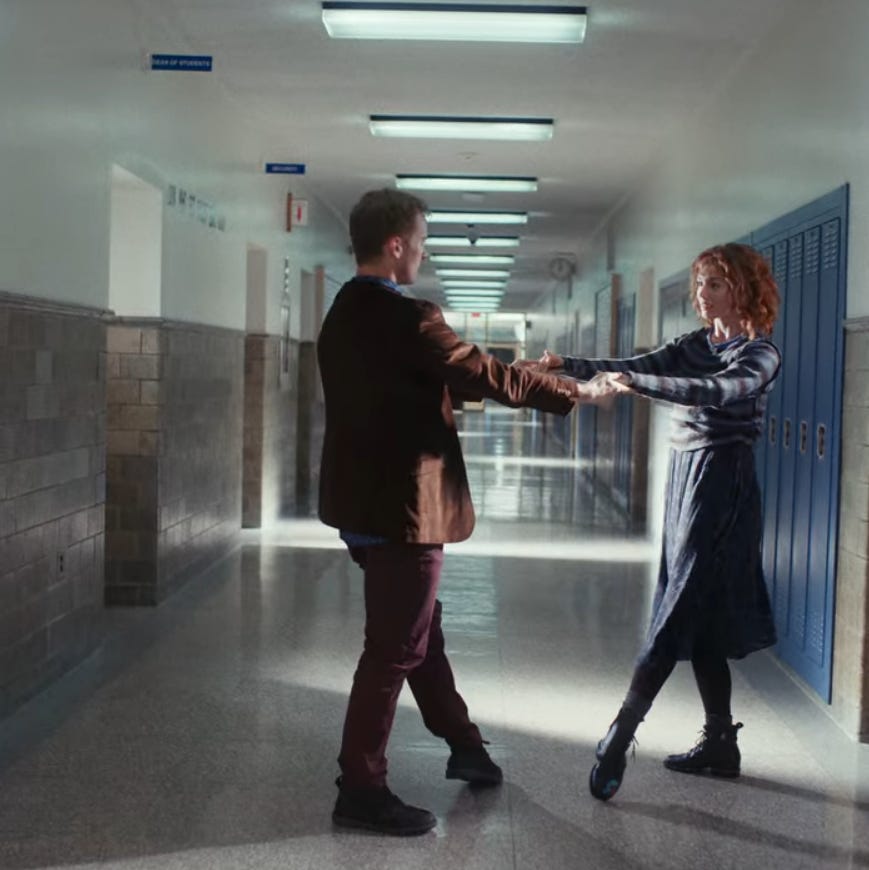
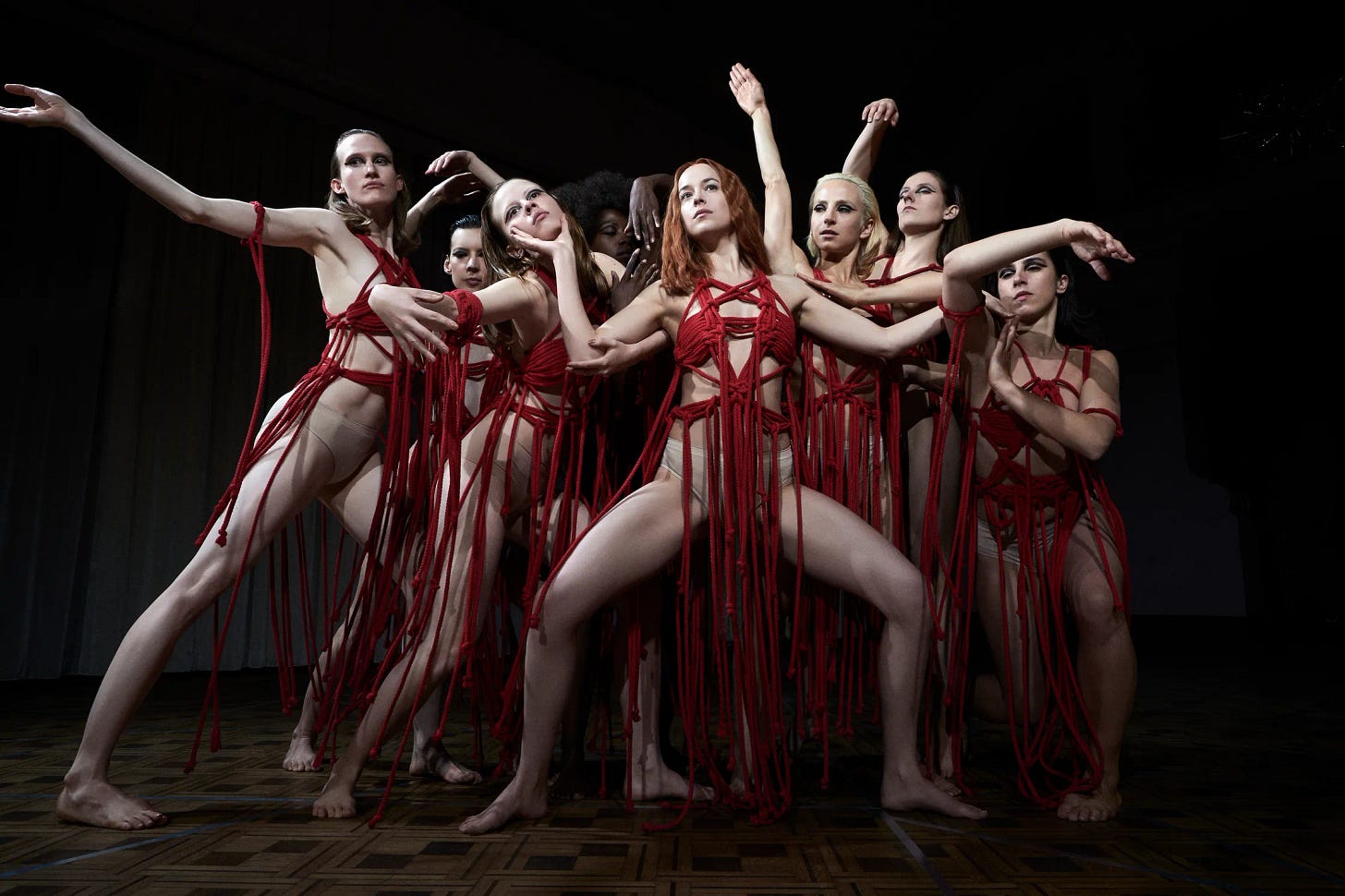
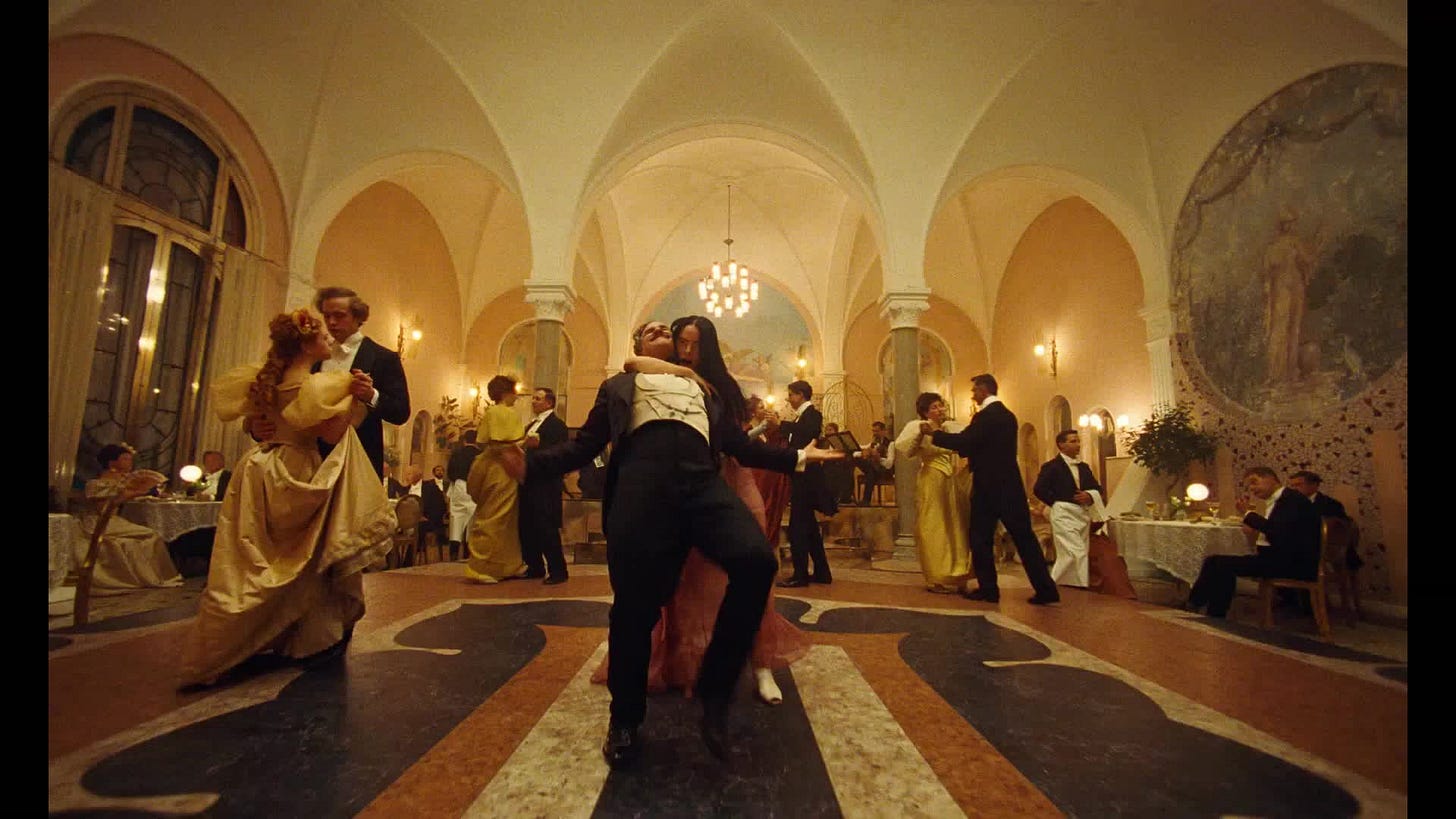
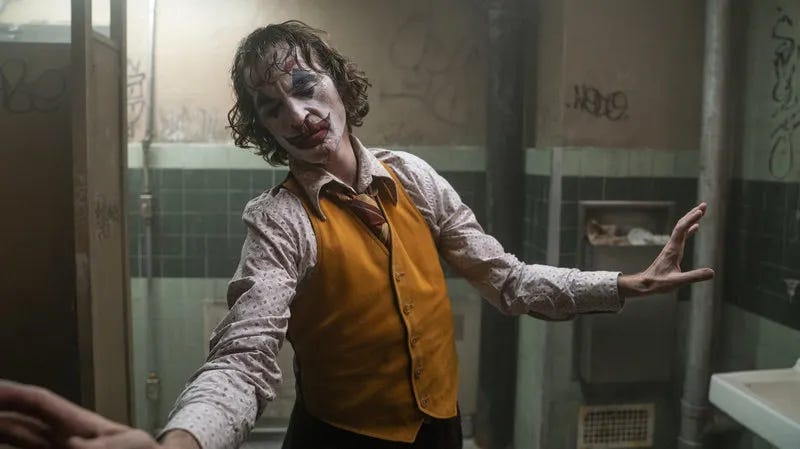
Such an interesting piece - my films to watch list just grew. 🧡
I want to see the Joker for that very reason. Well that and the fact that Joaquin Phoenix is a very talented actor so that would be interesting to see. I saw Saltburn. The only one of these I have seen. Another amazing talent in Keough and you hit the nail on the head. Couldn’t agree more.